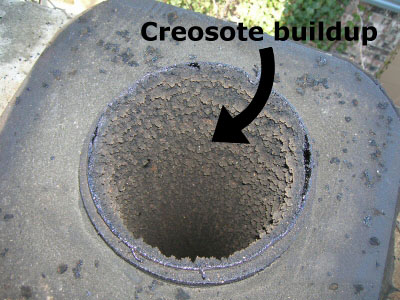There are a lot of benefits to heating your home with wood fuel. One potential drawback, however, is the danger of creosote buildup in your chimney and stove pipes. If handled properly, however, creosote shouldn’t deter you from wood heating.


When wood burns in your wood stove or fireplace, the oils in the wood fibers do not completely combust. Instead, they rise with the smoke and as it cools, they condense and collect on the inside of your chimney and pipes. One reason you should never burn green wood (wood that has not been allowed to dry for at least 6 months) is that it contains more oils than dry wood and causes much more creosote buildup.
Why is it harmful?
Creosote is potentially harmful because it is highly combustable. In other words, once it starts to build up, a particularly hot fire can ignite it, causing a chimney fire. Over the course of a season, it is possible for as much as several inches of creosote to accumulate. In the US alone, there are an average of 24,300 chimney fires every year, many as a result of excessive creosote buildup, according to the Chimney Safety Institute of America.
What can I do about it?
There are steps you can take to prevent or minimize creosote buildup, as well as maintenance procedures to clean it out once it forms. Keep in mind that preventative measures will not completely stop the accumulation of creosote, so regular chimney maintenance will still be necessary. To help prevent creosote buildup, you can:
- Burn only seasoned wood; do not burn green wood or artificial logs.
- Avoid making low-heat, smoldering fires. These allow more combustable material to rise with the smoke and more creosote to build up. The hotter the fire, the more combustable material will be burned off.
- Make sure your fires get plenty of air. When oxygen is restricted, fires do not burn as hot as they could, which adds to the buildup.
- Creosote builds up least when the smoke is hot all the way up to the top of the chimney when it exits your house. If possible, the chimney should be well-insulated all the way from the wood stove to the roof.
In addition, you should either clean your chimney with a chimney brush or have it professionally cleaned at least once a year.
